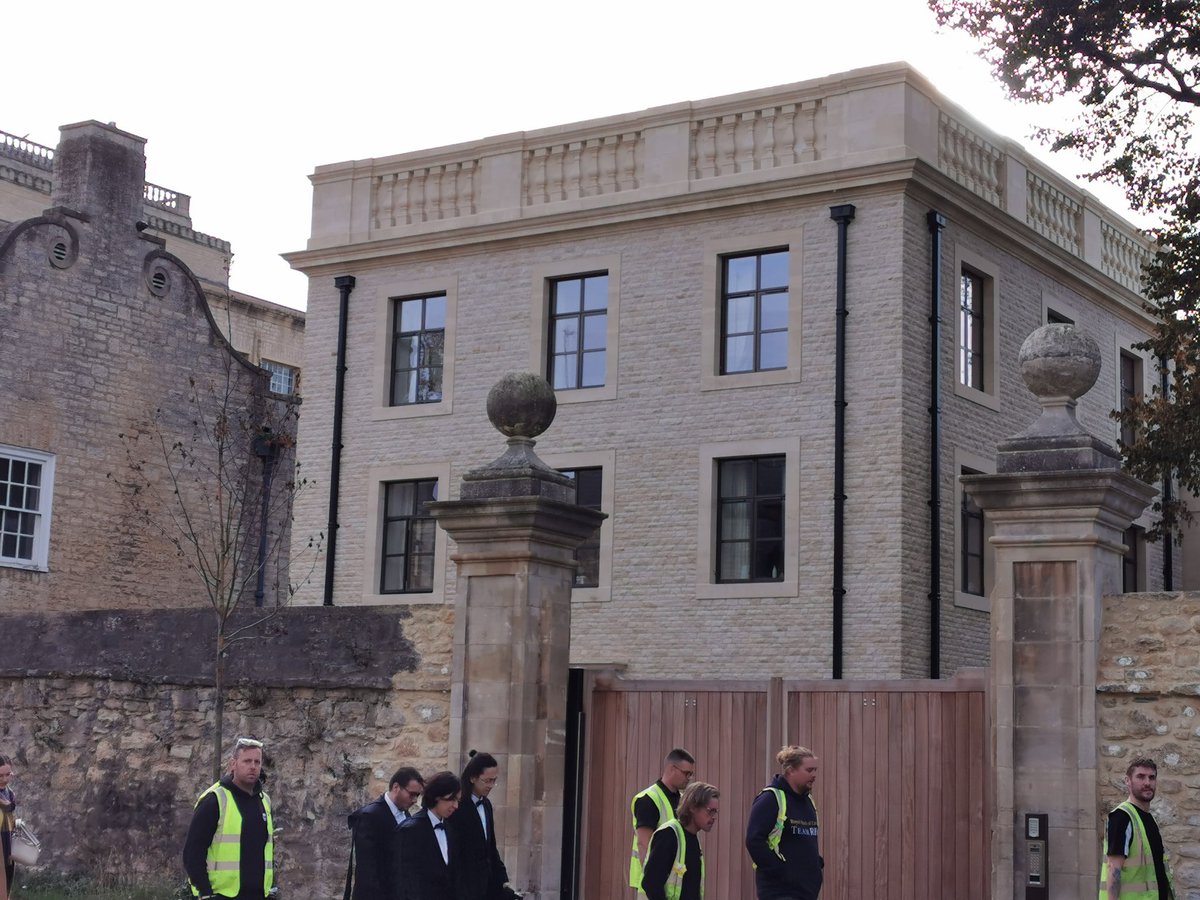🧵It's time to build on Britain's Roadbelt
Today, @createstreets call to build thousands of new homes on space reclaimed from wide, fast, legacy highways that savaged our cities and towns
We must rediscover the value of streets over the cost of roads..
.theguardian.com/cities/2023/se…
Today, @createstreets call to build thousands of new homes on space reclaimed from wide, fast, legacy highways that savaged our cities and towns
We must rediscover the value of streets over the cost of roads..
.theguardian.com/cities/2023/se…
Doing this can turn asphalt moats (left) into economically productive streets (right).
Removing one turning lane here in Rochdale could allow an extra row of housing and turn a wide road into a thriving street
But many will tell you the road must be there and must be 5 lanes..


Removing one turning lane here in Rochdale could allow an extra row of housing and turn a wide road into a thriving street
But many will tell you the road must be there and must be 5 lanes..


No doubt the same people, in 1967, would have told you this proposed interchange in Dalston 'must' be built. Or London would descend into chaos.
There are always dozens more ways to skin a cat. And transport planning is no different
By adopting vision-led planning we can...
There are always dozens more ways to skin a cat. And transport planning is no different
By adopting vision-led planning we can...

..rethink urban motorways, narrowing lanes (sometimes keeping the same capacity), removing vast on-ramps and turning wide roundabouts into tight junctions.
All the time eating into this left over space to fill our hunger for more affordable homes where they are needed most...
All the time eating into this left over space to fill our hunger for more affordable homes where they are needed most...

In our paper Moving Towards Growth, we go back to first principles of a city's purpose and its infrastructure spend to discover how we have wrongly been subsidising costly roads, when instead we should have been investing in creating streets....
createstreets.com/wp-content/upl…


createstreets.com/wp-content/upl…


In our economy the trade in ideas is crucial, yet we fail to create cities that enable this exchange, particularly with transport investment
We are blinded by speed, investing £bn's into shaving seconds off a commute
Instead we should focus on access to jobs and services...
We are blinded by speed, investing £bn's into shaving seconds off a commute
Instead we should focus on access to jobs and services...
This can be better done through investing our transport budget (particularly £27bn roads fund) into improving transport within cities, instead of between cookie cutter housing developments
To cope with more homes within cities and towns we can provide efficient streets. See 👇
To cope with more homes within cities and towns we can provide efficient streets. See 👇

Yet, we are woeful at investing in the transit as @jburnmurdoch demonstrated
We spend £100's of millions on single pieces of road infrastructure, often creating little economic benefit
In Nottingham £226m for trams created £169m for the local economy & £217m in the supply chain
We spend £100's of millions on single pieces of road infrastructure, often creating little economic benefit
In Nottingham £226m for trams created £169m for the local economy & £217m in the supply chain

This is rare, however, @CentreforCities found that ‘approximately, 67 per cent of people in big European cities can reach their city centre by public transport within 30 minutes, compared to only 40 per cent of the people in Britain’s big cities
..and the superb @thomasforth, on who's work i have drawn heavily, found that due to poor public transport reduces Birmingham's pop by 1/2.
believing that if we assume agglomeration benefits in the UK are the same as in France then this would increase GDP per capita by 7% 🤑
believing that if we assume agglomeration benefits in the UK are the same as in France then this would increase GDP per capita by 7% 🤑
But its not just metros and trams. Slow, so called, walkable streets, when combined with mixed-use places, drive value, often when they are away from fast moving, noisy traffic @StrongTowns have done excellent work on this
Roadbelt projects are not just a one off. There are ideas across the country such as, Bedford where @chriscities and his team are narrowing a roundabout to build 105 homes and space for business
And in Southend-on-Sea where @civicengineers are also replacing roads with homes


And in Southend-on-Sea where @civicengineers are also replacing roads with homes


I must thank @londonyimby, @NeilMurphy1978, @thomasforth, @tobylloyd , Nick Faulk, Lisa Hopkinson @chriscities and Stephen O'Malley for kindly helping and responding to my badgering and questions
And of course Tom Noble, @boys_nicholas & @RobertKwolek at Create Streets
And of course Tom Noble, @boys_nicholas & @RobertKwolek at Create Streets
For more on how we can change this, i have dug into the transport planning process, particularly modelling and appraisal in my paper 'Computer Says Road'
createstreets.com/wp-content/upl…

createstreets.com/wp-content/upl…

• • •
Missing some Tweet in this thread? You can try to
force a refresh

 Read on Twitter
Read on Twitter






















